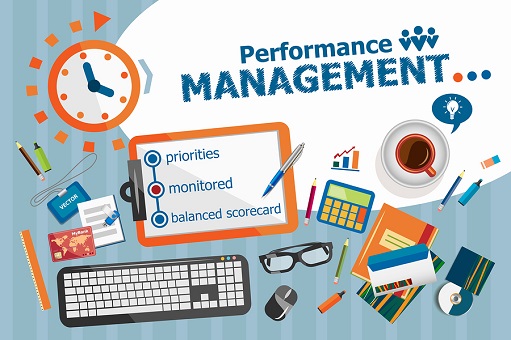
Usman Ghani (March 18, 2016)
Performance Management is a process through which a company consolidates goal setting and measures the performance in terms of metrics. It allows the company to appraise the performance of its employees and managers and ensure that their role supports the overall strategic aims of the company. From a customer service perspective, performance management covers the roles and responsibility of customer service representatives and customer satisfaction levels.
The process begins with planning; whereby overall expectations are determined after taking into account the aims and objectives of the customer service department. Plans are developed that outline responsibilities and duties of all employees. In the second phase, goals and objectives are discussed throughout the year with the employees. In the third phase, Year-end evaluation and review is carried out, taking into account the goals accomplished and the behavior of the employees. Based on the analysis, objectives are set for the next performance period.
It is not merely enough for employees to show up for work and clock-in the requisite hours in the modern economy, as the concept of work has transcended to efficiency and accomplishing tasks. Hence, it is paramount for companies to accurately measure the performance periodically in a systematic manner. In addition to ensuring that the performance benchmarks, in line with the corporate objectives, are being met, performance management helps employees improve their performance based on the feedback they receive. Moreover, performance management aids the reward mechanism, as promotion, increments and other nonfinancial rewards are based on performance. Performance management also plays an auxiliary role in the recruitment and selection process, since it provides an analytical overview of the past hiring, subsequently enabling the HR department to find the optimal fit for various jobs in the future.
360 Degree Feedback is a system through which employees receive confidential, anonymous feedback from their co-workers. This includes feedback from managers, subordinates and colleagues. The process is usually carried out online with employees filling out feedback forms. The forms take into account a wide range of workplace competencies. Along with the rating scale, there is also room for descriptive comments. The employees are also required to fill out a self-rating survey with the same set of survey questions.
This technique is highly effective to understand the strengths and weaknesses for each individual employee. After collection of all the data, the results are tabulated and presented in an easily interpretable format. 360 Degree Feedback is helpful in encouraging staff to be more productive and efficient in their roles. It allows employees to see exactly in which areas they are lacking, and need improvement.
It is important to develop performance metrics in order to measure, record and analyse the performance in quantitative form. Customer service departments use a variety of metrics including first time response, problem resolution time and customer experience rating.
First time response measures the time, on average, it takes for customer service representatives to get in touch with customers when they first reach out about a query or problem they might be facing. This metric provides a way for managers to measure the efficiency of each CSR. Problem resolution time measures the total time it takes to resolve a particular problem after initiation of interaction between the CSR and the customer. This measures how effectively a CSR was able to handle the problem at hand and the time it took to accomplish his/her duty. While, customer service rating is an external metric, since it entirely depends on customer’s input which the company receives as feedback. Customers are asked to rate the overall service experience along with comments or ways to improve the service in the future.
An effective performance management system deals with various difficulties along the way. It should be ensured that confidentiality of information is maintained. For example, 360-Degree Feedback technique only makes sense if the responses are kept anonymous. In the same way, performance evaluation of an employee should also be accessible to him/her in order to avoid prejudice and finger-pointing in the organization.
The human resource department should also ensure that any biased evaluation or reporting, based on personal differences, should be discarded. The aim of any performance management system has to be improvement and greater level of efficiency. It is important for the HR department to ensure that they give constructive criticism, and offer assistance to help employees improve their performance in the future.

Healthcare workers are entrusted with the great responsibility of caring for people. In order to continually offer comfort and care to people, there are certain skills that healthcare professionals need to master. Of course there are the obvious ones related...
Read More
Creative thinking is one of the most important and sought after soft skills that you need to acquire in an increasingly digital landscape of 2021 and beyond. Creative thinking skills are required in many different job roles to come up...
Read More
Sales are the backbone of any business and great salespeople are an asset for the company. Some people are naturally gifted in the art of persuasive communication and negotiation skills required to convince clients and effectively sell more. However, certain...
Read More